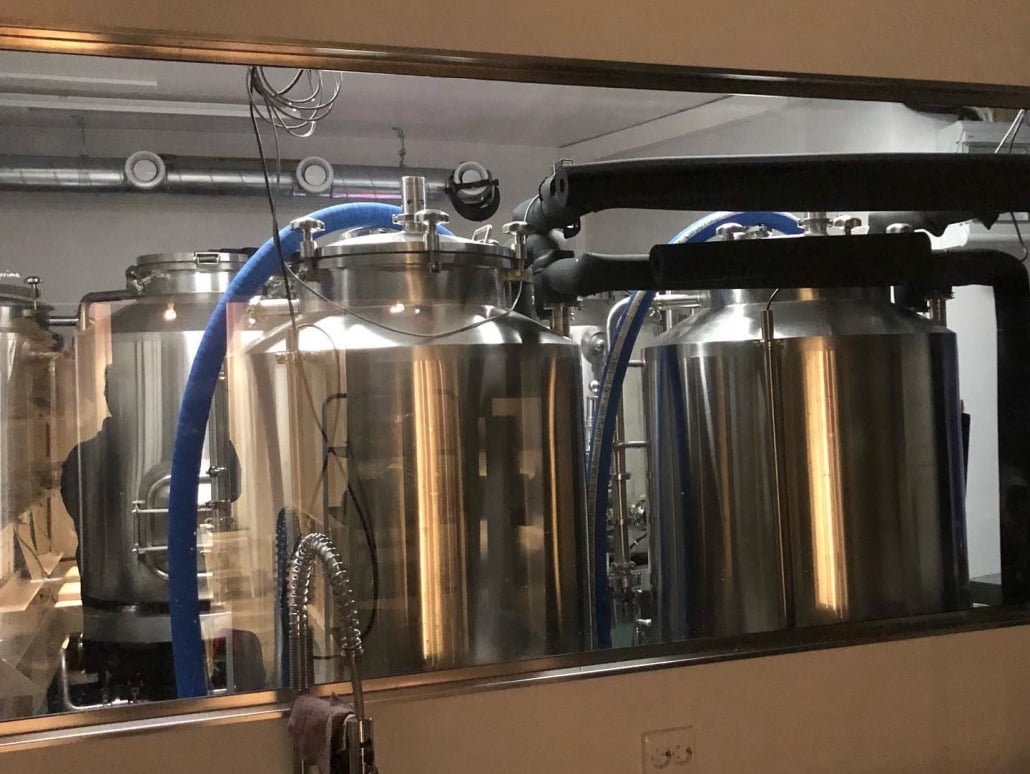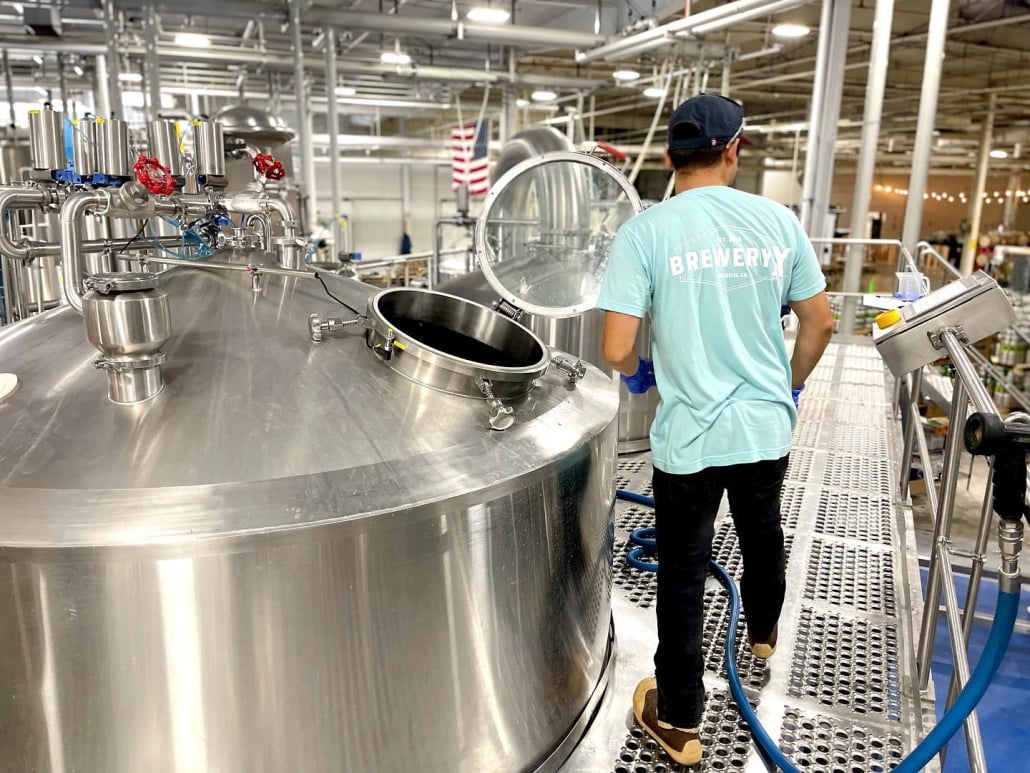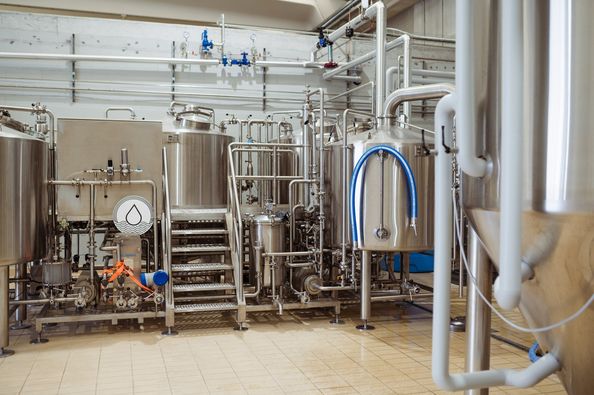Beer Brewing Equipment for Commercial Breweries
Beer brewing, especially at a commercial scale, is an intricate process that requires precision, patience, and the right equipment. The success of any brewery—whether a small craft operation or a large-scale production facility—heavily depends on selecting the best beer brewing equipment that matches your needs. This guide will walk you through the various aspects of beer brewing equipment for commercial use, including an overview, a detailed equipment guide, brewing process explanations, tables summarizing critical factors like capacity, design, pricing, suppliers, and maintenance, as well as a helpful FAQ.
Overview of Commercial Beer Brewing Equipment
Brewing beer commercially involves turning raw ingredients such as water, malt, hops, and yeast into finished beer through several stages, including mashing, boiling, fermenting, and packaging. To carry out this process effectively at a larger scale, breweries need industrial-grade brewing equipment. This equipment varies in terms of size, design, capacity, and cost depending on the brewery’s production volume, space availability, and specific goals. The choice of equipment is critical as it affects beer quality, production efficiency, and operational costs.
Key Components of Commercial Beer Brewing Equipment
- Brewhouse Equipment: Includes the mash tun, lauter tun, brew kettle, and whirlpool.
- Fermentation Tanks: Vessels where fermentation occurs.
- Heat Exchangers: Used to cool wort before fermentation.
- Brite Tanks: For aging and carbonating the beer.
- CIP (Clean-In-Place) Systems: Equipment to clean and sanitize brewing vessels.
- Filtration Systems: Used to clarify the beer.
- Kegging and Bottling Lines: For packaging the finished product.

Guide to Beer Brewing Equipment for Commercial Breweries
Commercial brewing requires precision and consistency. Having the right equipment is essential to scale your production while maintaining the quality of your brew. Here’s a detailed breakdown of the types of equipment you’ll need for your commercial brewery:
Brewhouse Equipment
The brewhouse is the heart of any brewery. It is where the primary processes of mashing, boiling, and whirlpooling occur. The size of your brewhouse directly impacts your production capacity and efficiency.
- Mash Tun: This vessel converts the starches in malted grains into sugars.
- Lauter Tun: Used for separating the wort (sugary liquid) from the grain husks.
- Brew Kettle: Where the wort is boiled with hops to develop flavor.
- Whirlpool: Helps in separating the solids from the liquid after boiling.
Fermentation Tanks
Once the wort has been boiled and cooled, it is transferred to fermentation tanks. These tanks allow yeast to convert the sugars into alcohol, transforming the wort into beer. Fermentation tanks come in different sizes and can be customized to meet the brewery’s production needs.
Brite Tanks
Brite tanks are where beer is conditioned and carbonated after fermentation. These tanks allow for additional clarification and stabilization of the beer before packaging. The size of the brite tank should match the size of the fermenters for efficient production.
CIP (Clean-In-Place) Systems
To maintain hygiene and prevent contamination, breweries rely on CIP systems. These automated systems clean and sanitize tanks and pipes without the need for disassembly.
Types of Commercial Beer Brewing Equipment
| Equipment Type | Function | Common Sizes | Materials Used |
|---|---|---|---|
| Mash Tun | Converts starch into sugars via mashing. | 3-barrel, 5-barrel, 10-barrel | Stainless steel, copper |
| Brew Kettle | Boils wort with hops to add bitterness and flavor. | 5-barrel, 15-barrel, 30-barrel | Stainless steel |
| Fermentation Tank | Enables yeast to convert sugars into alcohol. | 10-barrel, 20-barrel, 40-barrel | Stainless steel |
| Brite Tank | For carbonation and aging. | 10-barrel, 20-barrel | Stainless steel |
| Heat Exchanger | Rapidly cools down the wort before fermentation. | Varies based on system size | Stainless steel |
| Filtration System | Clarifies the beer by removing particles. | Varies | Plate filters, centrifuge |
| Kegging Line | Packages beer into kegs for distribution. | 10-20 kegs per hour | Stainless steel |
| Bottling Line | Packages beer into bottles. | 1,000 to 10,000 bottles/hour | Glass or aluminum bottles |
Commercial Beer Brewing Process: From Start to Finish
The beer brewing process in a commercial brewery involves several stages. Each step plays a crucial role in creating the final product. Here’s an overview of the key stages of commercial beer brewing:
1. Mashing
In the mashing process, malted barley is mixed with hot water in the mash tun. This creates a “mash,” which allows enzymes in the grain to convert starches into fermentable sugars. The mash is then transferred to a lauter tun, where the grain husks are separated from the sugary liquid (wort).
2. Boiling
The wort is moved into the brew kettle, where it is boiled for about an hour. During the boil, hops are added to impart bitterness, aroma, and flavor to the beer. After boiling, the wort is sent to a whirlpool, where any remaining solid particles are separated.
3. Cooling
The wort is passed through a heat exchanger to bring the temperature down to a level suitable for fermentation. Rapid cooling is essential to prevent any unwanted bacteria or spoilage.
4. Fermentation
In fermentation tanks, yeast is added to the cooled wort, and fermentation begins. The yeast consumes the sugars and converts them into alcohol and carbon dioxide. Depending on the beer style, this process can take anywhere from a few days to several weeks.
5. Conditioning
Once fermentation is complete, the beer is transferred to brite tanks, where it undergoes conditioning and carbonation. This process ensures that the beer reaches its desired flavor profile and carbonation level.
6. Filtration
Some breweries use filtration systems to remove any remaining yeast or sediment, which clarifies the beer and gives it a clean finish.
7. Packaging
Finally, the beer is packaged either in kegs, bottles, or cans for distribution. Automated kegging and bottling lines are used in commercial breweries to speed up the packaging process.
Capacity, Design, Layout, and Customization of Commercial Breweries
When planning a brewery, it is essential to consider the available space, the desired production capacity, and the customization options for the equipment. Here’s a detailed overview of the most critical factors:
| Factor | Details |
|---|---|
| Capacity | Brewing equipment varies in size based on the number of barrels per batch. Standard systems range from 3-barrel to 60-barrel systems for large-scale production. |
| Space Requirements | Larger breweries require more space for equipment, storage, and packaging lines. Smaller craft breweries can fit into smaller industrial spaces. |
| Design Considerations | Layout is important for workflow efficiency, and breweries often need dedicated areas for brewing, fermenting, and packaging. |
| Customization | Equipment manufacturers offer customization options to match a brewery’s production scale, specific beer styles, and aesthetic preferences. |
Price Range of Commercial Beer Brewing Equipment and Suppliers
The cost of commercial brewing equipment can vary depending on the size, type, and customization. Here’s a breakdown of typical costs:
| Supplier | Equipment Type | Price Range | Notes |
|---|---|---|---|
| BrewTech Systems | 10-barrel brewhouse | $50,000 to $150,000 | Offers full customization options. |
| SS BrewTech | Fermentation tanks | $15,000 to $80,000 | Known for high-quality stainless steel tanks. |
| Alpha Brewing Ops | Complete brewery systems | $100,000 to $500,000 | Large-scale systems with automated controls. |
| Ager Tank & Equipment | Bottling and Kegging lines | $20,000 to $200,000 | Supplier of both new and used equipment. |
| Stout Tanks | Brite Tanks | $10,000 to $75,000 | Specializes in customizable tanks for craft brewers. |
Installation, Operation, and Maintenance of Commercial Beer Brewing Equipment
Successfully running a brewery isn’t just about brewing beer; it also involves proper installation, operation, and maintenance of the brewing equipment. Here’s what you need to know:
| Aspect | Details |
|---|---|
| Installation | Installation should be performed by professionals to ensure proper plumbing, electrical, and ventilation setup. |
| Operation | Operating commercial brewing systems requires knowledge of equipment calibration, temperature control, and timing. |
| Maintenance | Regular cleaning with CIP systems, inspections, and servicing of parts is essential to keep equipment in good shape. |
Choosing a Supplier for Commercial Beer Brewing Equipment
Selecting the right supplier for your brewing equipment is critical. You’ll need to evaluate suppliers based on several factors:
| Consideration | Details |
|---|---|
| Reputation | Look for suppliers with a proven track record in the industry. Reviews and testimonials are valuable indicators of reliability. |
| Customization Options | Some suppliers offer fully customizable systems to match your brewery’s specific needs and design preferences. |
| Customer Support | Consider suppliers that offer excellent customer service, including troubleshooting and maintenance support. |
| Lead Time | Evaluate how long it takes for the supplier to deliver equipment and set it up. Some manufacturers have long waiting times due to high demand. |
| Warranty | Look for warranties on equipment to ensure you’re covered in case of defects or breakdowns. |
Pros and Cons of Commercial Beer Brewing Equipment
Brewing equipment comes with various advantages and limitations based on its type, scale, and brand. Here’s a comparison:
| Equipment Type | Advantages | Disadvantages |
|---|---|---|
| Stainless Steel Tanks | Durable, easy to clean, resistant to rust. | More expensive than other materials like plastic or glass. |
| Automated Systems | Increases efficiency, reduces manual labor. | Higher initial cost, requires specialized training to operate. |
| Modular Equipment | Scalable as the brewery grows. | May require more space and frequent maintenance. |

FAQ
| Question | Answer |
|---|---|
| How much does commercial brewing equipment cost? | The cost ranges from $50,000 to over $500,000 depending on the brewery size and equipment type. |
| Can I customize brewing equipment? | Yes, many suppliers offer customization options for brewing equipment based on your specific needs. |
| How do I maintain brewing equipment? | Regular cleaning, inspections, and part replacements are essential to maintain brewing equipment. |
| What size system do I need for my brewery? | The size depends on your production goals. For small craft breweries, a 10-barrel system is common. |
In conclusion, commercial beer brewing equipment is an investment that requires careful planning and research. Whether you are a small craft brewer or operating a large brewery, the right equipment, layout, and suppliers can significantly impact the quality of your beer and the efficiency of your operation. By understanding the equipment types, brewing process, customization options, and maintenance requirements, you can ensure your brewery operates smoothly and produces high-quality brews.
Share this entry
Interested in learning more about Brewing Systems including additional details and pricing information? Please use the form below to contact us!
YOLONG BREWERY EQUIPMENT FAQS
- Commercial Brewery / Craft Brewery / Microbrewery / Nanobrewery
- What is The Difference Between Craft Beer and Industrial Beer?
- The Bespoke Differences In Custom Brewing Systems
- Everything You Need to Know About Kettle Souring
- How to Choose Brewing Equipment for Your business?
- How To Choose The-Best Partner To Build Your Commercial Microbrewing System?
- Two Detection Sensors That You Need To Use In Your Brewhouse System
- Remote Control Applications in Brewing Equipment/How does it work?
- How To Clean Your Brand New Brewery Tanks?

